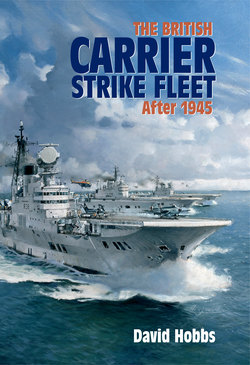Читать книгу The British Carrier Strike Fleet - David Hobbs - Страница 6
На сайте Литреса книга снята с продажи.
ОглавлениеForeword
[Sailors have always] learned, in the grimmest schools, precision and resolution. The sea endures no makeshifts. If a thing is not exactly right it will be vastly wrong. Discipline, courage and contempt for all that is pretentious and insincere are the teaching of the ocean and the elements and they have been qualities, in all ages, of the British sailor.
John Buchan
I do not usually begin my books with a quotation but these words by John Buchan seemed so apt for the opening page of a book about the Royal Navy’s carrier strike fleet after 1945 that I decided to begin it with them. Unlike any other form of warfare that I have been involved with, operating fixed-wing aircraft from a carrier in the open ocean really does ‘endure no makeshifts’ and has to be ‘exactly right’, especially at night or in bad weather. Naval aviation also delivers a whole range of capabilities that have proved to be invaluable in the defence of the United Kingdom and its interests around the world, often when nothing else was available.
In my earlier book about the British Pacific Fleet I explained the great effect that Fleet was to have on the post-war Royal Navy. In this book I take that story forward and give examples of the many operations in which British aircraft carriers have played a critical role and describe the ships and aircraft that achieved so much. In the seventy years since the end of the Second World War the RN and its integral Fleet Air Arm have undergone huge changes and, despite their conspicuous success, aircraft carriers have had to undergo greater scrutiny than any other British weapons system. The Fleet Air Arm has had to fight not only against the nation’s enemies but also against politicians who have often failed to understand what an enormous asset these ships and their aircraft are. The independent Air Force has been principally concerned about preserving its own identity and has often been less helpful than it should have been, despite the Government’s attempts to promote joint activity. In order to show how this see-saw balance developed I have alternated examples of carrier operations with descriptions of a succession of defence reviews with comment on their impact. I have described how technology evolved from the simple Seafire FR 47 operating from the ubiquitous light fleet carriers in 1946 to the technologically complex Lightning II Joint Strike Fighter in 2015 and the Queen Elizabeth class carriers that are to operate them. Carrier strike operations were inevitably compared with the British nuclear deterrent and I have included a chapter on how the deterrent force evolved for comparison.
It is, in part, my story for I served as a fixed and rotary-wing pilot for over thirty years, during which I served in seven aircraft carriers, a number of naval air squadrons and two appointments in the Ministry of Defence. Lest readers should feel that I lack knowledge of the RAF and how it operates when commenting on it, I might also add that I did my advanced flying training in the RAF’s Number 4 Flying Training School, flying Gnats, and completed two exchange appointments, in one of which I flew Hunter FGA 9s and in the other Canberra B 2s and T 17s. I am one of the few pilots to include qualifications on Gannets, RN and RAF Hunter variants, Canberras and Wessex helicopters in their log books and take enormous pride in having carried out over 800 deck landings. After leaving the RN, I served in the Naval Historical Branch for a period and then became the Curator and Deputy Director of the Fleet Air Arm Museum at RNAS Yeovilton. In both those appointments I was able to carry out a prodigious amount of detailed research into naval aviation which I have put to good use in this book. I have included the activities of a number of people to create a balance between what happened, why it happened and an informative level of human interest. I am, of course, conscious that for every name mentioned there are literally dozens of others that I have omitted but, at the very least, I hope to have kept the spirit of the Fleet Air Arm in these exciting years alive and brought its magnificent achievements to a wider audience. The Fleet Air Arm has always been a relatively small organisation but mobility gives it the ability to ‘punch above its weight’ and be there when it is needed. I am proud to have been part of its story.
David Hobbs MBE
Commander Royal Navy (Retired)
Crail
February 2015
